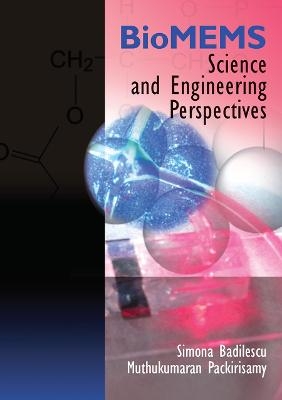
BioMEMS
CRC Press (Verlag)
978-0-367-45226-1 (ISBN)
As technological advancements widen the scope of applications for biomicroelectromechanical systems (BioMEMS or biomicrosystems), the field continues to have an impact on many aspects of life science operations and functionalities. Because BioMEMS research and development require the input of experts who use different technical languages and come from varying disciplines and backgrounds, scientists and students can avoid potential difficulties in communication and understanding only if they possess a skill set and understanding that enables them to work at the interface of engineering and biosciences.
Keeping this duality in mind throughout, BioMEMS: Science and Engineering Perspectives supports and expedites the multidisciplinary learning involved in the development of biomicrosystems. Divided into nine chapters, it starts with a balanced introduction of biological, engineering, application, and commercialization aspects of the field. With a focus on molecules of biological interest, the book explores the building blocks of cells and viruses, as well as molecules that form the self-assembled monolayers (SAMs), linkers, and hydrogels used for making different surfaces biocompatible through functionalization.
The book also discusses:
Different materials and platforms used to develop biomicrosystems
Various biological entities and pathogens (in ascending order of complexity)
The multidisciplinary aspects of engineering bioactive surfaces
Engineering perspectives, including methods of manufacturing bioactive surfaces and devices
Microfluidics modeling and experimentation
Device level implementation of BioMEMS concepts for different applications.
Because BioMEMS is an application-driven field, the book also highlights the concepts of lab-on-a-chi
Muthukumaran Packirisamy is a professor and research chair on Optical BioMEMS in the Department of Mechanical and Industrial Engineering at Concordia University in Canada. He is the recipient of the I.W. Smith award and fellow from the Canadian Society for Mechanical Engineering, the award for Best Researcher of the University, and the PetroCanada Young Innovator Award. He was also a member of the Canadian TaskForce on MEMS and Microfluidics. His research interest includes optical bioMEMS, integration of micro systems, and micro-nano integration. Dr. Simona Badilescu is a senior scientist with a background in physical chemistry and a rich experience in teaching and research. She received her Ph.D. degree from the University of Bucharest (Romania) and specialized in molecular spectroscopy, surface science, and analytical applications of infrared spectroscopy. Presently, her research interest includes nanomaterials and their sensing applications.
Introduction. Substrate Materials Used in BioMEMS Devices. Biomolecules and Complex Biological Entities: Structure and Properties. Engineering of Bioactive Surfaces. Methods of Study and Characterization of Surface-Modified Substrates. Biosensing Fundamentals. Fabrication of BioMEMS Devices. Introduction to Microfluidics. BioMEMS: Life Science Applications.
| Erscheinungsdatum | 03.12.2019 |
|---|---|
| Verlagsort | London |
| Sprache | englisch |
| Maße | 178 x 254 mm |
| Gewicht | 630 g |
| Themenwelt | Medizin / Pharmazie ► Physiotherapie / Ergotherapie ► Orthopädie |
| Naturwissenschaften ► Biologie | |
| Technik ► Maschinenbau | |
| Technik ► Medizintechnik | |
| Technik ► Umwelttechnik / Biotechnologie | |
| ISBN-10 | 0-367-45226-X / 036745226X |
| ISBN-13 | 978-0-367-45226-1 / 9780367452261 |
| Zustand | Neuware |
| Haben Sie eine Frage zum Produkt? |
aus dem Bereich


